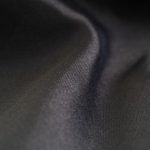When you're applying Scotchgard to fabrics, it's crucial to start with a clean slate. You'll want to ensure the material is free from dirt and stains, and choosing the right application area is just as important. A well-ventilated space makes a difference, and maintaining the correct distance during application helps avoid unwanted puddles. But there's more to consider as you move through the process, especially when it comes to drying time and effectiveness. Understanding these nuances can significantly impact the longevity of the protection; let's explore how to maximize your results.
Table of Contents
Key Takeaways
- Clean and dry the fabric thoroughly before application to ensure optimal bonding of the Scotchgard product.
- Test for colorfastness on a small, inconspicuous area to avoid discoloration.
- Apply in a well-ventilated area, avoiding humidity and direct sunlight for best results.
- Use even, overlapping strokes from a distance of 6-12 inches to prevent puddling.
Understanding Scotchgard Products
Scotchgard products are designed to protect fabrics and surfaces from stains and spills, making them essential for maintaining your belongings. Whether you're dealing with upholstery, carpets, or outdoor fabrics, Scotchgard acts as a barrier against unwanted messes. You'll find that these treatments are available in various forms, including sprays and wipes, each tailored to specific materials.
When you apply Scotchgard, you're not just enhancing your items' appearance; you're also extending their lifespan. The protective layer helps prevent liquids from penetrating the fibers, which can lead to more significant damage or discoloration. It's particularly useful for items that experience heavy use, like furniture or clothing.
Understanding the different types of Scotchgard products is crucial. For instance, some are specifically formulated for delicate fabrics, while others are better suited for tougher surfaces. Always check the label for compatibility with your items.
Preparing Your Fabrics
Before applying any protective treatment, make sure your fabrics are clean and completely dry to ensure optimal adhesion and effectiveness. Taking the time to prepare your fabrics properly will yield the best results and prolong the life of your Scotchgard application. Here's how to get started:
- Clean the Fabric: Remove any dirt, dust, or stains. For machine-washable fabrics, follow the care instructions and wash them thoroughly. If you're dealing with upholstery, consider using a vacuum or a brush to eliminate loose debris.
- Dry Completely: After cleaning, let your fabrics dry completely. Moisture can interfere with the Scotchgard's ability to bond effectively. If you're in a hurry, using a fan or a hairdryer on a cool setting can speed up the drying process.
- Test for Colorfastness: Before applying Scotchgard, it's crucial to check if the fabric is colorfast. Apply a small amount of Scotchgard on an inconspicuous area to ensure it doesn't alter the color or texture.
Choosing the Right Application Area
Selecting the right application area is essential for achieving the best results with your fabric protector. Start by choosing a well-ventilated space, preferably outdoors or in a garage with open doors. This helps disperse any fumes and ensures you're working in a safe environment.
Avoid areas with high humidity or direct sunlight, as these conditions can affect the effectiveness of Scotchgard.
Next, make sure the surface you're applying to is clean and free of dust or debris. A cluttered workspace can lead to uneven application and may compromise the fabric's protection. Lay down a drop cloth to protect your floors and keep any overspray contained.
Consider the temperature of the area as well; it's best to apply Scotchgard when it's between 50°F and 90°F. Extreme temperatures can alter the product's effectiveness.
Finally, ensure you have adequate lighting. Good visibility allows you to see where you've applied the protector, helping you cover every inch of the fabric evenly.
Application Techniques
Using the right application techniques can significantly enhance the effectiveness of your fabric protector, ensuring even coverage and optimal results. When you're ready to apply Scotchgard, follow these essential steps for a successful application:
- Prep the Surface: Start by cleaning the fabric thoroughly. Remove any dust, dirt, or stains before you begin. This will help the Scotchgard bond better with the material.
- Use Even Strokes: Shake the can well and hold it about 6-12 inches away from the fabric. Apply the spray in even, overlapping strokes. This technique prevents puddling and ensures that every part of the fabric gets treated.
- Work in Sections: Divide larger areas into smaller sections. This allows you to focus on one part at a time, ensuring complete coverage without missing spots.
Allowing Proper Drying Time
Allowing ample drying time is crucial for the Scotchgard to fully bond with the fabric and maximize its protective properties. After applying the product evenly, step back and resist the urge to touch or manipulate the fabric until it's completely dry.
Generally, you should allow at least two hours for the initial drying process, but it's best to give it a full 24 hours before exposing the fabric to moisture or heavy use.
Keep in mind that humidity and temperature can affect drying times. If you're in a humid environment, the fabric might need extra time to dry.
To speed up the process, consider placing the item in a well-ventilated area or using a fan to enhance air circulation. Avoid direct sunlight, as it can cause uneven drying or damage to certain fabrics.
Testing for Effectiveness
To ensure Scotchgard is effective, you should regularly test the treated fabric for water repellency. This helps you confirm that the protective layer is still working and your fabric remains safeguarded against spills and stains.
Here's how you can easily check the effectiveness:
- Water Drop Test: Drop a small amount of water on the fabric. If it beads up and rolls off, your treatment is still effective. If the water soaks in, it's time to reapply Scotchgard.
- Spot Check: Choose a small, inconspicuous area of the fabric and apply a tiny amount of water. Monitor how the water interacts with the fabric. This will give you a quick indication of the overall treatment's effectiveness.
- Visual Inspection: Look for any discoloration or changes in texture over time. If you notice any differences, it might be a sign that the Scotchgard has worn off.
Maintenance Tips for Treated Fabrics
To keep your treated fabrics in top shape, it's essential to stick to a regular cleaning schedule.
Don't forget to check for wear and tear, as this can affect the performance of the Scotchgard treatment.
Regular Cleaning Schedule
Establishing a regular cleaning schedule is essential for maintaining the protective benefits of Scotchgard-treated fabrics.
Regular cleaning not only helps to remove dirt and stains but also ensures that the Scotchgard treatment remains effective over time. Here are three tips to help you keep your fabrics looking fresh:
- Weekly Vacuuming: Make it a habit to vacuum your treated fabrics weekly. This removes dust and debris that can become embedded in the fibers, potentially compromising the Scotchgard protection.
- Spot Clean Immediately: If you spill something on your treated fabric, address it right away. Blot the area gently with a clean cloth and a mild detergent, avoiding harsh chemicals that can damage the fabric or the Scotchgard layer.
- Deep Clean Periodically: Schedule a deep cleaning every 6 to 12 months, depending on usage. You can either do this yourself with the right equipment or hire a professional. Ensure they know the fabric is treated with Scotchgard to use suitable cleaning methods.
Check for Wear
Regular cleaning helps your Scotchgard-treated fabrics stay effective, but it's equally important to regularly check for signs of wear that could compromise their protection. Over time, fabrics may experience fading, fraying, or discoloration, which can indicate that the Scotchgard treatment is wearing off.
Start by inspecting your fabric closely. Look for any areas that seem less vibrant or have started to lose their water-repellent qualities. You might notice water no longer beads up on the surface, which is a clear sign that it's time to reapply the Scotchgard treatment. Pay attention to seams and edges, as these areas often wear down faster.
If you find any damage, consider how to best restore the fabric. For minor fraying, trimming the edges can help maintain a clean look. If the fabric shows significant signs of wear, you might need to replace it or consult a professional cleaner.
Frequently Asked Questions
Can Scotchgard Be Used on Leather Materials?
Yes, you can use Scotchgard on leather materials. It helps repel water and stains, keeping your leather looking great. Just make sure to test it on a small area first to ensure compatibility.
How Long Does Scotchgard Protection Last on Fabrics?
Scotchgard protection typically lasts for several months, depending on factors like fabric type and exposure to wear. You should reapply it periodically to maintain its effectiveness and ensure your fabrics stay protected against stains and spills.
Is Scotchgard Safe for Pets and Children?
Yes, Scotchgard's generally safe for pets and children once it's dry. Just make sure to ventilate the area during application, and keep them away until the fabric's completely cured for added safety.
Can I Reapply Scotchgard After Washing My Fabric?
Yes, you can reapply Scotchgard after washing your fabric. Just ensure the fabric is completely dry before application. This helps maintain its protective qualities against stains and spills, keeping your items looking their best.
What Should I Do if I Notice Discoloration After Application?
If you notice discoloration after applying Scotchgard, don't panic. You can try gently cleaning the area with mild soap and water. If it persists, consider consulting a professional cleaner for specialized advice and treatment.
- How Does Ring Spun Cotton Affect Garment Fit and Shape Retention? - August 13, 2024
- What Are the Challenges in Producing Ring Spun Cotton? - August 13, 2024
- Is Ring Spun Cotton Suitable for Plus-Size Clothing? - August 13, 2024







